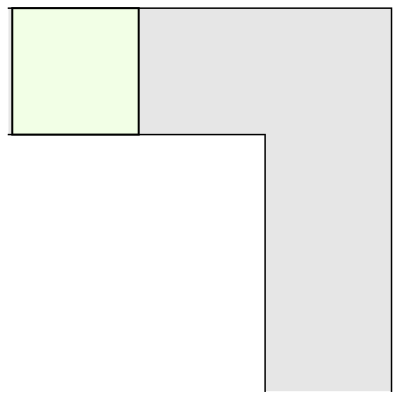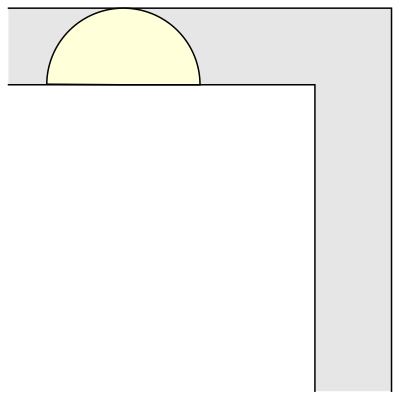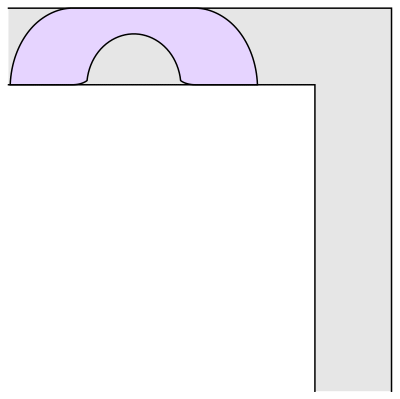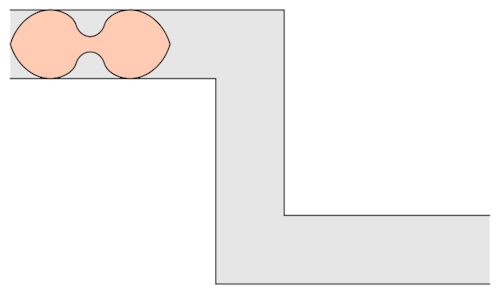Maurits Cornelis Escher (Dutch, 1898-1972) - Encounter, Lithograph On Paper, 46.99 X 57.15 Cm (1944)

Maurits Cornelis Escher (Dutch, 1898-1972) - Encounter, lithograph on paper, 46.99 x 57.15 cm (1944)
More Posts from Matematicaulysses and Others

Just Descending
Can’t find the creator of this. I saw it tweeted by Alexander Bogomolny. It’s Escher, of course, but also the Penrose staircase. Roger and his father! Great #mathart story. See Wikipedia for more.

I really enjoy your postings. I would like to build some of the models you have built. How do you build the joints that fasten the staws together in the isocosahedron for October 27, 2017? Is it part of a kit? Where can I get them? Thank you so much!
Thanks!
I guess this post, right?(Accurately, I post this on Oct 17, not Oct 27)
I bought this kit at IKEA and 100-yen shop.

Here are how I made the model. :D



I made cuboctahedron and icosidodecahedron models too.(Octahedron model is the previous one)

These transforms rhombicuboctahedron, rhombicosidodecahedron and cuboctahedron.

So many parts and monotonous work, but interesting. :D

'Endless Loop'. Max Bill. 1953-1956.


If one remembers this particular episode from the popular sitcom ‘Friends’ where Ross is trying to carry a sofa to his apartment, it seems that moving a sofa up the stairs is ridiculously hard.
But life shouldn’t be that hard now should it?
The mathematician Leo Moser posed in 1966 the following curious mathematical problem: what is the shape of largest area in the plane that can be moved around a right-angled corner in a two-dimensional hallway of width 1? This question became known as the moving sofa problem, and is still unsolved fifty years after it was first asked.

The most common shape to move around a tight right angled corner is a square.
And another common shape that would satisfy this criterion is a semi-circle.

But what is the largest area that can be moved around?
Well, it has been conjectured that the shape with the largest area that one can move around a corner is known as “Gerver’s sofa”. And it looks like so:

Wait.. Hang on a second
This sofa would only be effective for right handed turns. One can clearly see that if we have to turn left somewhere we would be kind of in a tough spot.
Prof.Romik from the University of California, Davis has proposed this shape popularly know as Romik’s ambidextrous sofa that solves this problem.

Although Prof.Romik’s sofa may/may not be the not the optimal solution, it is definitely is a breakthrough since this can pave the way for more complex ideas in mathematical analysis and more importantly sofa design.

Have a good one!
whoa this guy knows how to party

The secret of pie

Um probleminha divertido de geometria plana.

-
 the-unknown-friend liked this · 3 years ago
the-unknown-friend liked this · 3 years ago -
 castlesvania reblogged this · 3 years ago
castlesvania reblogged this · 3 years ago -
 castlesvania liked this · 3 years ago
castlesvania liked this · 3 years ago -
 theegoist liked this · 3 years ago
theegoist liked this · 3 years ago -
 nightwatch-official reblogged this · 3 years ago
nightwatch-official reblogged this · 3 years ago -
 nightwatch-official liked this · 3 years ago
nightwatch-official liked this · 3 years ago -
 alexphil323 reblogged this · 3 years ago
alexphil323 reblogged this · 3 years ago -
 globeshaped liked this · 3 years ago
globeshaped liked this · 3 years ago -
 when-mother-sleeps liked this · 3 years ago
when-mother-sleeps liked this · 3 years ago -
 portalibis liked this · 3 years ago
portalibis liked this · 3 years ago -
 barnsburntdownnow reblogged this · 3 years ago
barnsburntdownnow reblogged this · 3 years ago -
 katenkahaik reblogged this · 4 years ago
katenkahaik reblogged this · 4 years ago -
 laegless liked this · 4 years ago
laegless liked this · 4 years ago -
 rprovento liked this · 4 years ago
rprovento liked this · 4 years ago -
 nixlupa reblogged this · 4 years ago
nixlupa reblogged this · 4 years ago -
 opiumjones liked this · 4 years ago
opiumjones liked this · 4 years ago -
 hayokha reblogged this · 4 years ago
hayokha reblogged this · 4 years ago -
 asiasionpopulasionss liked this · 4 years ago
asiasionpopulasionss liked this · 4 years ago -
 pernecky reblogged this · 4 years ago
pernecky reblogged this · 4 years ago -
 nana144 liked this · 4 years ago
nana144 liked this · 4 years ago -
 phono-optica liked this · 4 years ago
phono-optica liked this · 4 years ago -
 dobosar liked this · 4 years ago
dobosar liked this · 4 years ago -
 deathofdelta liked this · 4 years ago
deathofdelta liked this · 4 years ago -
 despotgoblin liked this · 4 years ago
despotgoblin liked this · 4 years ago -
 ninikokk liked this · 4 years ago
ninikokk liked this · 4 years ago -
 graphic-lame reblogged this · 4 years ago
graphic-lame reblogged this · 4 years ago -
 popotins liked this · 4 years ago
popotins liked this · 4 years ago -
 nitwitkitten reblogged this · 4 years ago
nitwitkitten reblogged this · 4 years ago -
 thewater0flife liked this · 4 years ago
thewater0flife liked this · 4 years ago -
 drummerofthought reblogged this · 4 years ago
drummerofthought reblogged this · 4 years ago -
 existentiallens liked this · 4 years ago
existentiallens liked this · 4 years ago -
 fxtwng reblogged this · 4 years ago
fxtwng reblogged this · 4 years ago -
 fxtwng liked this · 4 years ago
fxtwng liked this · 4 years ago -
 tauro60 reblogged this · 4 years ago
tauro60 reblogged this · 4 years ago -
 kimsonvalon reblogged this · 4 years ago
kimsonvalon reblogged this · 4 years ago -
 kimsonvalon liked this · 4 years ago
kimsonvalon liked this · 4 years ago -
 lbha liked this · 4 years ago
lbha liked this · 4 years ago -
 810-kid reblogged this · 4 years ago
810-kid reblogged this · 4 years ago -
 weltanschauuung reblogged this · 4 years ago
weltanschauuung reblogged this · 4 years ago -
 kairaate liked this · 4 years ago
kairaate liked this · 4 years ago
Blog do profº Ulysses TDBueno destinado a curiosidades, demonstrações, links, trabalhos, artigos, imagens e tudo que possa mostrar a matemática no mundo.
107 posts